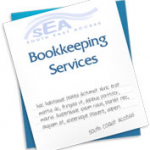Super changes for 2023
Eligibility for downsizer contributions The age an eligible individual can make a downsizer contribution to their superannuation has changed. If your client has reached the eligible age, they (each individual) may be able to contribute up to $300,000 from the proceeds of the sale (or part sale) of their home into their superannuation fund. To make a downsizer contribution; the eligible age is as follows: From 1 January 2023, 55 years old or older From 1 July 2022, 60 years old or older From 1 July 2018, 65 years old or older. Super guarantee If you’re eligible for super guarantee (SG) contributions, your employer must pay the minimum SG contribution based on the current super guarantee percentage of your ordinary time earnings (up to the maximum contribution base). Generally, all employees are eligible for SG. It doesn’t matter if you’re: full time, part time or casual – except that if you’re under 18 years old, you’re only eligible for SG contributions if you work more than 30 hours in a week paid to do work of a private or domestic nature, you’re only eligible for SG contributions if you work more than 30 hours in a week Contractors If you’re a contractor but considered an employee for super […] read more
Home office expenses calculator 2023
You can claim a deduction if you carry out income producing work at home and incur expenses in using your home for that purpose. read more
2023 Tax Return Questionnaire
Please complete this form to assist us in completing your income tax return 2023 Tax Return Questionnaire (pdf) South East Access services is always of exceptional quality, focusing on: Business Development & Support Management Accounting Tax Return Preparation Stress-free reporting to the Australian Taxation Office read more
ATO has made Major changes to the way you can calculate Home Office expenses from 1 July 2022
 Eligibility to claim To claim working from home expenses, you must: be working from home to fulfil your employment duties, not just carrying out minimal tasks, such as occasionally checking emails or taking calls incur additional running expenses as a result of working from home have records that show you incur these expenses. To calculate your deduction for working from home expenses, you must use one of the methods set out below. Where you incur running expenses for both private and work purposes, you need to apportion your deduction. You can only claim the work-related portion as a deduction. Additional running expenses Running expenses relate to the use of facilities within your home. These expenses are generally considered private and domestic expenses. You can claim a deduction for additional running expenses you incur as a direct result of working from home. Additional running expenses may include: electricity or gas (energy expenses) for heating or cooling and lighting home and mobile internet or data expenses mobile and home phone expenses stationery and office supplies the decline in value of depreciating assets you use for work – for example office furniture such as chairs and desks equipment such as computers, laptops and software the […] read more
Eligibility to claim To claim working from home expenses, you must: be working from home to fulfil your employment duties, not just carrying out minimal tasks, such as occasionally checking emails or taking calls incur additional running expenses as a result of working from home have records that show you incur these expenses. To calculate your deduction for working from home expenses, you must use one of the methods set out below. Where you incur running expenses for both private and work purposes, you need to apportion your deduction. You can only claim the work-related portion as a deduction. Additional running expenses Running expenses relate to the use of facilities within your home. These expenses are generally considered private and domestic expenses. You can claim a deduction for additional running expenses you incur as a direct result of working from home. Additional running expenses may include: electricity or gas (energy expenses) for heating or cooling and lighting home and mobile internet or data expenses mobile and home phone expenses stationery and office supplies the decline in value of depreciating assets you use for work – for example office furniture such as chairs and desks equipment such as computers, laptops and software the […] read more The tax-free threshold for low-income earners
The tax-free threshold remains as $18,200, however, the low-income tax offset has been significantly reduced from 01.07.2022 to a possible $700 down from the possible $1500 in 2021/2022 If your taxable income is under the tax-free threshold, there are reasons why they may still need to lodge an income tax return. The most common reason would be that you have pay as you go (PAYG) tax and do require to complete complete a tax return to claim any monies. Income tax rates 2021/2022 ATO tax rates are www.ato.gov.au/rates/individual-income-tax-rates/ Contact the team at South East Access for more information on your personal income tax return. read more
2022 Tax Return Questionnaire
 Please complete this form to assist us in completing your income tax return 2022 Tax Return Questionnaire (pdf) 2022 Tax Return Questionnaire (doc) South East Access services is always of exceptional quality, focusing on: Business Development & Support Management Accounting Tax Return Preparation Stress-free reporting to the Australian Taxation Office read more
Please complete this form to assist us in completing your income tax return 2022 Tax Return Questionnaire (pdf) 2022 Tax Return Questionnaire (doc) South East Access services is always of exceptional quality, focusing on: Business Development & Support Management Accounting Tax Return Preparation Stress-free reporting to the Australian Taxation Office read more From 1 July 2022 important super guarantee changes will apply to businesses
 From 1 July 2022, two important super guarantee (SG) changes will apply to business. the rate of SG is increasing from 10% to 10.5% the $450 per month eligibility threshold for when SG is paid is being removed. What this means for you These changes mean from 1 July 2022: you’ll need to make SG contributions at the new rate of 10.5% employees can be eligible for SG, regardless of how much they earn. You may have to pay SG for the first time for some or all of your employees. We’re working with digital service providers (DSPs) to make sure payroll software is updated in time. We are aware of these changes and able to assist you. What you need to do Check that your software is updated to correctly calculate your employees’ SG entitlement from 1 July 2022. If the removal of the $450 threshold means you’ll be paying SG for one or more employees for the first time, you’ll need to give them a Standard Choice Form. If your employee does not provide you with a choice of super fund, review the Stapled Super Fund information on the ATO website for guidance on what you need to […] read more
From 1 July 2022, two important super guarantee (SG) changes will apply to business. the rate of SG is increasing from 10% to 10.5% the $450 per month eligibility threshold for when SG is paid is being removed. What this means for you These changes mean from 1 July 2022: you’ll need to make SG contributions at the new rate of 10.5% employees can be eligible for SG, regardless of how much they earn. You may have to pay SG for the first time for some or all of your employees. We’re working with digital service providers (DSPs) to make sure payroll software is updated in time. We are aware of these changes and able to assist you. What you need to do Check that your software is updated to correctly calculate your employees’ SG entitlement from 1 July 2022. If the removal of the $450 threshold means you’ll be paying SG for one or more employees for the first time, you’ll need to give them a Standard Choice Form. If your employee does not provide you with a choice of super fund, review the Stapled Super Fund information on the ATO website for guidance on what you need to […] read more Federal Budget Special 2022
The Treasurer, Mr Josh Frydenberg, handed down the Federal Budget for 2022-23 on 29th March 2022. In an election year, the focus of Budget was inevitably on pleasing the electorate, with large amounts spent on lower and middle income earners, pensioners and welfare recipients and a 50% reduction in fuel duty all geared towards capturing the votes of “Middle Australia”. For individuals, the centrepiece was the increase in the low and middle income tax offset, which is welcome. People earning up to $126,000 will get a rebate of $420 in excess of what they would have got anyway through the existing tax offset. All you have to do to get it is lodge a tax return for 2021-22 – so funds should start to flow to taxpayers from 1 July 2022. Unfortunately, this is just a short term measure. Next year, the low and middle income tax offset disappears completely – meaning that people earning up to $126,000 will see a tax rise of up to $1,080. It’s hard to see how that will do anything to help cost of living pressures over the medium and long term. Worse, just as most Australians will experience this tax rise, the wealthiest […] read more
Changes to JobKeeper
Hopefully you are aware of the changes to JobKeeper from the end of September but below is a summary just in case. JobKeeper Payment updates Firstly you need to check to see if you still or will now qualify for JobKeeper 2. Do you have staff? Were they working on average more than 20 hrs per week in March and/or June? Businesses should start getting ready for the JobKeeper extension which commences on 28 September 2020. If you are already receiving payments for your eligible employees with JobKeeper 1, you do not need to re-enrol, however you do need to review the hours they work. From 28 September 2020, JobKeeper Payments must be paid to each eligible employee at the new payment rates, determined by the total hours worked during either March or June. Ensure you take action by 28 September and are fully aware of the new payment amounts & conditions, such as reporting employee hours and reducing JobKeeper payments. CHANGES TO JOBKEEPER – ACTION REQUIRED NOW For employers To be eligible for the first JobKeeper payment extension period of 28 September 2020 to 3 January 2021, businesses and not-for-profits will need to demonstrate that their GST turnover had […] read more


